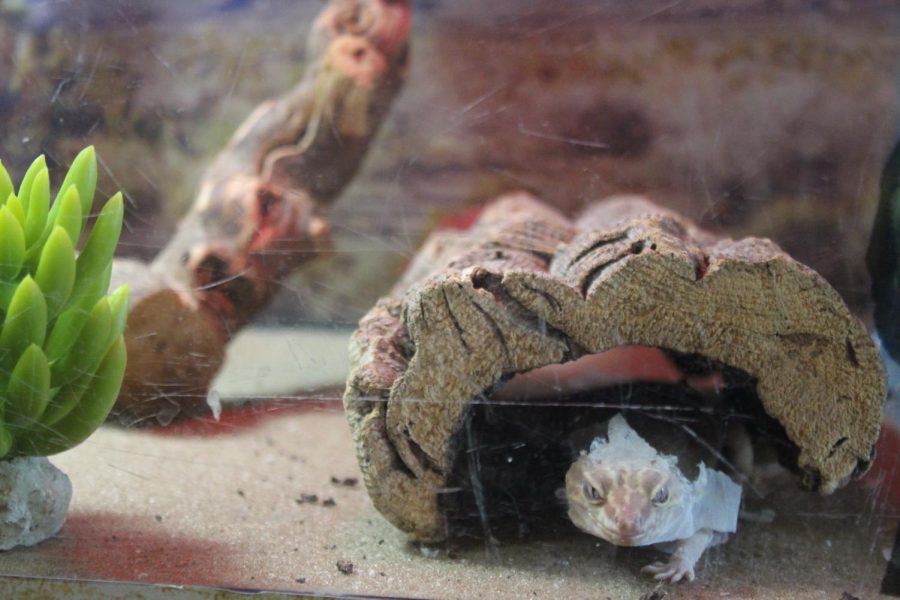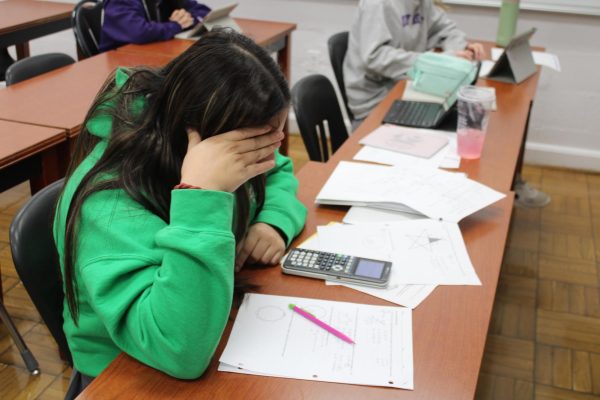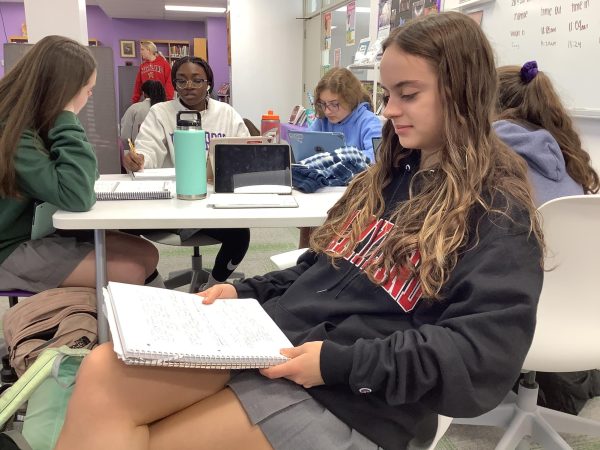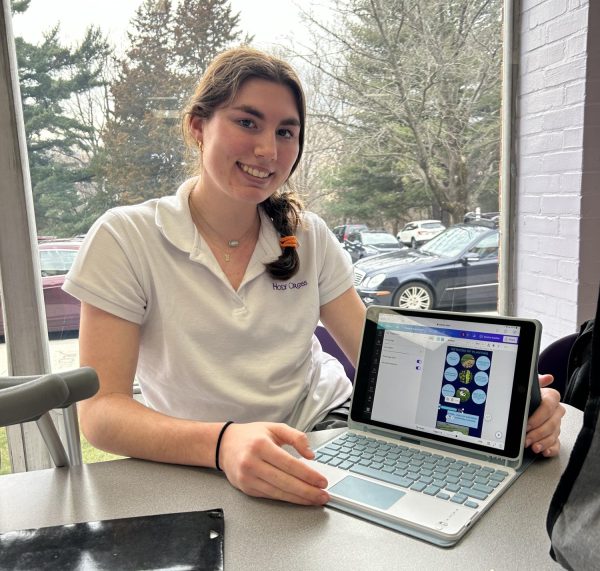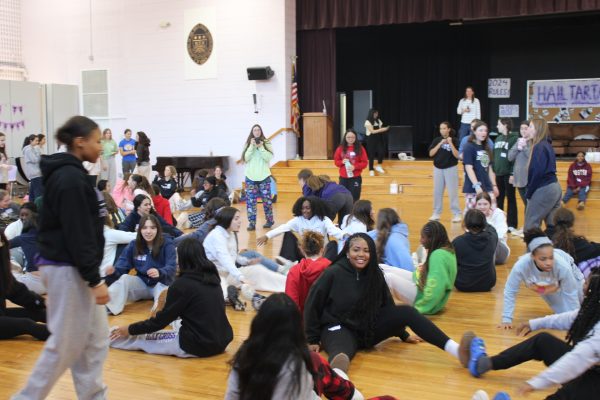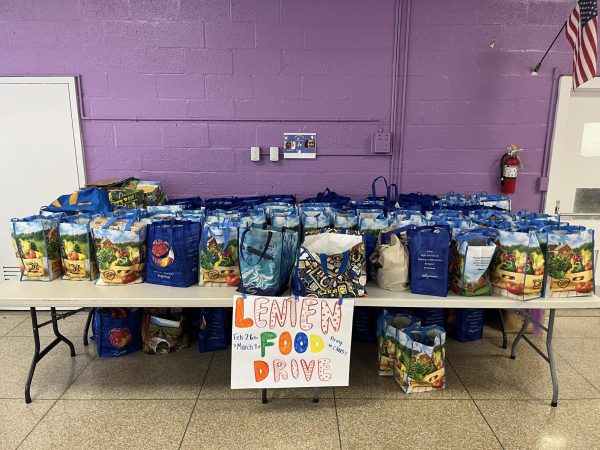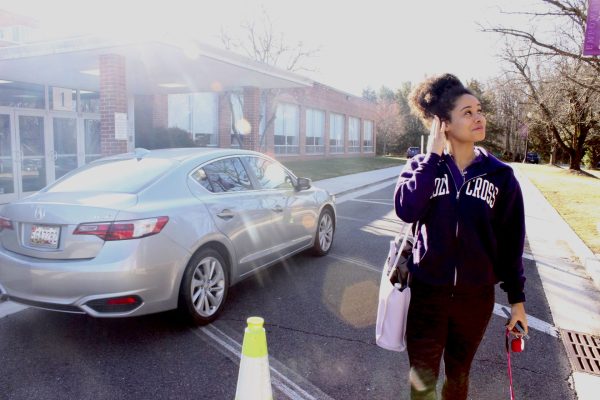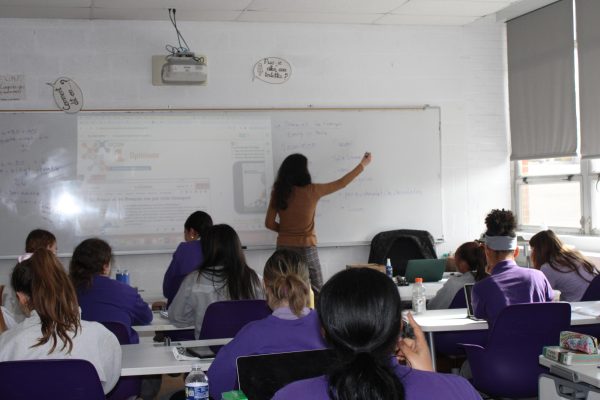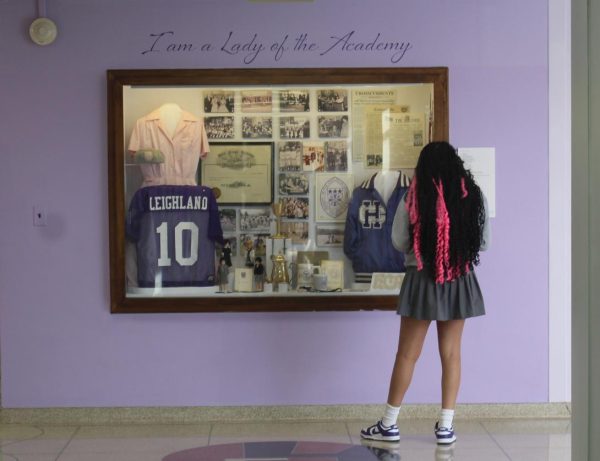The Critters of Holy Cross
Photo by Sophia Massaro
The leopard gecko, in Alison Simon’s science lab, is in the midst of his shedding-skin process as he stares directly at the camera.
Science labs, along with other classrooms, are infamous for housing class pets. The pets bring joy to everyone, but what are the benefits when it comes to learning. These little creatures can be anything from a scaly lizard, to a cuddly hamster and even bugs. Many people think that these animals are just unique decor for the room, but in reality they can help students learn and understand the lesson better.
The animals in the science lab, such as the gecko and multiple fish tanks, are used as a hands-on learning experience for the AP Biology class. They help students have a visual idea of anything from how an ecosystem works, and understanding the behaviors of the animal itself.
“Betta fish are examples of mini ecosystems that are cycling the nutrients,” science teacher Alison Simon explained.
The fish aquariums can provide an interactive learning experience for the students. Experiments like these can help the brain grasp the concept easier.
“Students are constantly doing water testing.” Simon shared.
Taking care of the pets requires a lot of dedication. The students have to personally feed their assigned pet. This can teach important life lessons for the student.
“The pets are their [AP Biology students’] responsibility,” Simon said.
Even though the pets can be time consuming and come with a lot of responsibility, students find it calming to interact with the pets. For the student it can feel as if she is with a friend.
“I feel like when there is an animal present, there is an automatic sense of companionship,” science teacher Ashley Gardner mentioned.
In AP Biology, four students are assigned to take care of one class pet. It is their and only their obligation to feed and interact with that assigned pet.
“It’s definitely an added responsibility, but overall a simple task,” senior Megan Loupe shared.
Loupe and three other students were assigned to take care of their class betta fish, Goob. They have to feed him and test the water for nitrites and nitrates. Even spending five minutes with an animal can brighten their day. The students look forward to taking care of their assigned pet each class.
“I think I can speak for all of us when I say that overall we like to come to bio to see Goob, and take care of him together,” Loupe explained.
Although some teachers do worry about the possibility of distraction caused by the pets, others do not seem to be too bothered. If rules are set, then distraction should not be too much of an issue with the students.
“The pet won’t be a major distraction as long as expectations are set at the beginning of the year,” Gardner claimed. “When we’re in the middle of a lesson, the lesson is the focus.”
The joy that the AP Bio students get from taking care of the fish can even become a topic of conversation at home. Assigning a pet to a group can make them feel like the fish is their own, adding a sense of independence for the student.
“Having a fish that’s my own and not my family’s is cool,” Loupe shared, “Talking to my family, I have a different perspective on taking care of Goob because it’s ours to take care of.”

Sophia Massaro is a sophomore at AHC. She is excited to be a reporter for the school website, Tartan Times. She plays ice hockey for the school and is...

